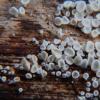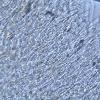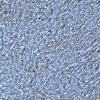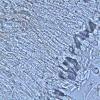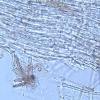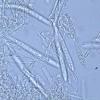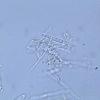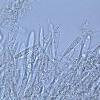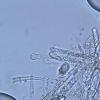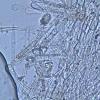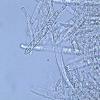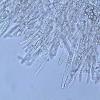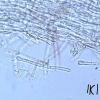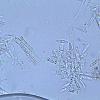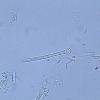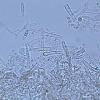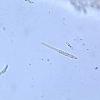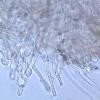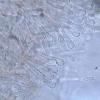
08-01-2026 21:22
 Blasco Rafael
Blasco Rafael
Hola, He recogido esta muestra de Orbilia sobre Re

07-01-2026 10:24
 Danny Newman
Danny Newman
Pezicula sp. on indet. hardwood Appalachian Highl

07-01-2026 22:22
 Danny Newman
Danny Newman
Tatraea sp. on indet. hardwood The Swag, Great Sm

07-01-2026 17:29
 Marc Detollenaere
Marc Detollenaere
Dear Forum,On a barkless Populus I found some smal

10-11-2021 17:33
 Riet van Oosten
Riet van Oosten
Add-on topic http://www.ascofrance.com/forum/7059

07-01-2026 10:05
 Danny Newman
Danny Newman
cf. Chaetospermum on XylariaCosby Campground, Grea

02-01-2026 17:43
MARICEL PATINOHi there, although I couldn't see the fruitbody, I

04-01-2026 17:45
 Stephen Martin Mifsud
Stephen Martin Mifsud
I was happy to find these orange asmocyetes which
Lachnum ¿¿ brevipilosum ??
Blasco Rafael,
26-06-2014 09:06
 . De Hola, Alguien Ayudar Florerias, y Decir si es correcto
. De Hola, Alguien Ayudar Florerias, y Decir si es correcto Recogido en madera muy degaradada, Avellano y abedul estafa algun Fresno.
1,5 - 2, 2 mm diametro,
lanceoladas Parafisis, septadas, PARECE Que se DIVIDEN el del los septos,
pelos de dos Tipos UNOS rectos de X2 - X2, aire 5 y otos de X4 el apice redondeado (capitados) Los Dos Tipos estafadores excrecencias (granulaciones) en Las Paredes Exteriores,
ASCAs J + de 62 a 77 X 5,8 - 6 , 3
de Es Poras vistas Pocas muy (6) 9 - 14 X 2,5 - 3, 2
testura prismatica
Cerca de las parafisis sí ve oscuro gel un, Que estafa IKI sí Vuelve anaranjado - rojizo
Un saludo
Rafael
Hello, can anyone help and tell if it is correct.
Incorporated in very degaradada wood, hazel and birch with some Fresno.
1,5 - 2, 2 mm diameter,
Lanceolate paraphyses septate, it seems that the septa are divided
hairs of two types of a straight X2 - X2, X4 5 otos with rounded apex (capitated) with both types excrescences (granulation) on the exterior walls,
Asci J + of 62-77 X 5.8-6 3
It is seen very few spores (6) 9-14 X 2,5 - 3, 2
Texture prismatica
Near the paraphyses is a dark gel, which turns orange IKI - tawny
regards
Rafael
Hans-Otto Baral,
26-06-2014 09:29

Re : Lachnum ¿¿ brevipilosum ??
The somewhat scattered guttules (VBs) in the paraphyses that do not protrude much would be characteriszic of brevipilosum. Also I assume the absence of croziers. Spore size is o.k. Only I wonder about the season, did you find it now? Because it is a winter species.
Another option would be Lachnum pubescens, but I know this only from the type.
Did you measure hair length?
Another option would be Lachnum pubescens, but I know this only from the type.
Did you measure hair length?
Blasco Rafael,
26-06-2014 10:39

Re : Lachnum ¿¿ brevipilosum ??
Hola Zotto, son del dia 18-6-14
No he medido la largura, intento medirlos ahora
Rafael
No he medido la largura, intento medirlos ahora
Rafael
Blasco Rafael,
26-06-2014 11:35

Re : Lachnum ¿¿ brevipilosum ??
Despues de Varia? PREPARACIONES no le Logrado ver ningun pelo entero, de Todos los Partidos Veo.
Me lo dejado de PONER en el Mensaje anterior, ya en solitario de Visto Que habia Una y no le di inportancia de Que Las esporas Tienen septo un,
Ahora que mas de Visto esporas y los muchas de Ellas septadas
Pelos X 3,5 --- X4, 2 y apice engrosado x 5 - x 6
Rafael .
After several preparations I failed to see any entire hair all parties.
I left to put in the previous post, as only had seen and did not give inportancia spores have a septum,
I've now seen more spores and many chambered
Hairs X 3.5 --- X4, 2 AND APICE thickened x 5 - x 6
Rafael
Me lo dejado de PONER en el Mensaje anterior, ya en solitario de Visto Que habia Una y no le di inportancia de Que Las esporas Tienen septo un,
Ahora que mas de Visto esporas y los muchas de Ellas septadas
Pelos X 3,5 --- X4, 2 y apice engrosado x 5 - x 6
Rafael .
After several preparations I failed to see any entire hair all parties.
I left to put in the previous post, as only had seen and did not give inportancia spores have a septum,
I've now seen more spores and many chambered
Hairs X 3.5 --- X4, 2 AND APICE thickened x 5 - x 6
Rafael
Hans-Otto Baral,
26-06-2014 11:49

Re : Lachnum ¿¿ brevipilosum ??
Hi had asked for the length, not width of the hairs. But I think it would match L. brevipilosum.
Nevertheless I hesitate a bit. Another option is L. pudibundum but that species has strongly protruding paraphyses full of VB-droplets.
A mount of the hymenium without applying pressure would perhaps help to exclude this.
Nevertheless I hesitate a bit. Another option is L. pudibundum but that species has strongly protruding paraphyses full of VB-droplets.
A mount of the hymenium without applying pressure would perhaps help to exclude this.


